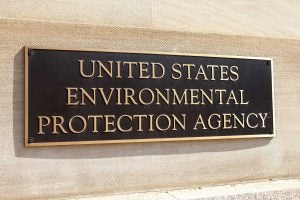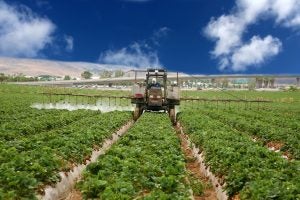Pay-per-view boxing matches. I’ve never really understood the appeal of these things. I remember attending a bloggers’ convention in Washington, D.C., the same day as one of these high-profile events. My fellow attendees were engaging in discussions about content creation, website troubleshooting, and best practices during the day. But by night they were sneaking into the hotel bar to watch a couple guys knock the crap out of one another.
I might be biased by my day job, but I find legal knockouts a lot more interesting. And right now, the Endangered Species Act and the Federal Insecticide, Fungicide, and Rodenticide Act are sparring in an all-out war.
If you know anything about pesticide regulation, you already know about FIFRA. It’s the primary way the U.S. Environmental Protection Agency reviews, regulates, and registers pesticides. The EPA takes a comprehensive look at the best available science to weigh the active ingredient’s approval against the product’s benefits. It also considers how the pesticide will impact humans, animals, and the environment. If the chemical is ultimately registered, the product is sold with a carefully crafted label by the EPA instructing users on safe and effective applications.

FIFRA’s regulatory approach has served our country well since 1947. We have an abundant, nutritious, and safe food supply. And applicators know how to use the pesticides in a way that minimizes risks to humans, animals, and the environment.
And then there’s the Endangered Species Act. As the name implies, it tasks every federal agency, including the EPA, to evaluate and ensure their actions are unlikely to endanger or threaten species or their habitats. Agencies are directed to consult with the National Marine Fisheries Service (NMFS) and the Fish and Wildlife Service (FWS).
So the EPA is supposed to perform so-called biological evaluations for each and every pesticide registered under FIFRA. Practically speaking, the EPA would assess how each of the 16,000 registered pesticides affect 1,672 species designated as endangered. In reality, the EPA has mostly ignored this mandate. Why? Because the FIFRA evaluations are so comprehensive, and include a consideration about real-world applications, it isn’t necessary. In other words, if a pesticide won’t be applied where a protected fish lives, there’s no need to study that.
But some radical activist organizations have weaponized the ESA against the EPA’s FIFRA registrations. It goes like this. Activists file a lawsuit against the EPA for not performing a biological evaluation for a registered pesticide. The EPA concedes, because technically they haven’t done that. Activists and the EPA settle (or the court orders it) with the EPA agreeing to follow the ESA’s requirements.

Major spoiler alert: Pesticides usually have a negative impact on these species. After all, that’s why farmers are trying to use them — they actually work! The problem is that the ESA lacks an essential component of the FIFRA assessment: the balancing of risks with benefits. Sure, a pesticide might hurt some horned toad 50 miles off the California coast. But if no one is spraying the pesticide on that island, why does it matter? The benefits clearly outweigh any theoretical cost. (And before anyone @’s me, I’m in no way saying farmers want to spray endangered species.)
Unfortunately, the lawsuits have forced the EPA to quickly crank out a biological evaluation every time it gets sued. Sometimes that means sacrificing precision and specific data. That was fully on display when the agency evaluated glyphosate and atrazine. Based on old data and imprecise models, the EPA concluded the two herbicides were likely to adversely affect nearly all species and critical habitats in the continental United States.
The result was a heyday for environmental groups using the headlines to solicit donations.
More recently though, the EPA found a way to balance FIFRA and ESA when assessing the registration for the herbicides Enlist Duo and Enlist One. After the EPA performed the biological evaluation, it revised the products’ label to include new requirements and restrictions. These included limitations on when the herbicides could be applied and additional applicator training. And when the decision wasn’t working out in the real world, the EPA reviewed the registration and modified it appropriately.
The truth is that these biological evaluations aren’t going away anytime soon. As soon as the EPA settles one lawsuit, another one pops up. We can expect that to continue.
Despite the pressure, it’s absolutely imperative that the EPA has the time and resources available to make scientifically sound conclusions. Because all of those registrations are important crop-protection tools without which farmers will see lower yields and, as a result, a smaller food supply.
So instead of a knockout punch between FIFRA and ESA, the EPA needs to choreograph a graceful ballet routine to harmonize the two.
Amanda Zaluckyj blogs under the name The Farmer’s Daughter USA. Her goal is to promote farmers and tackle the misinformation swirling around the U.S. food industry.



